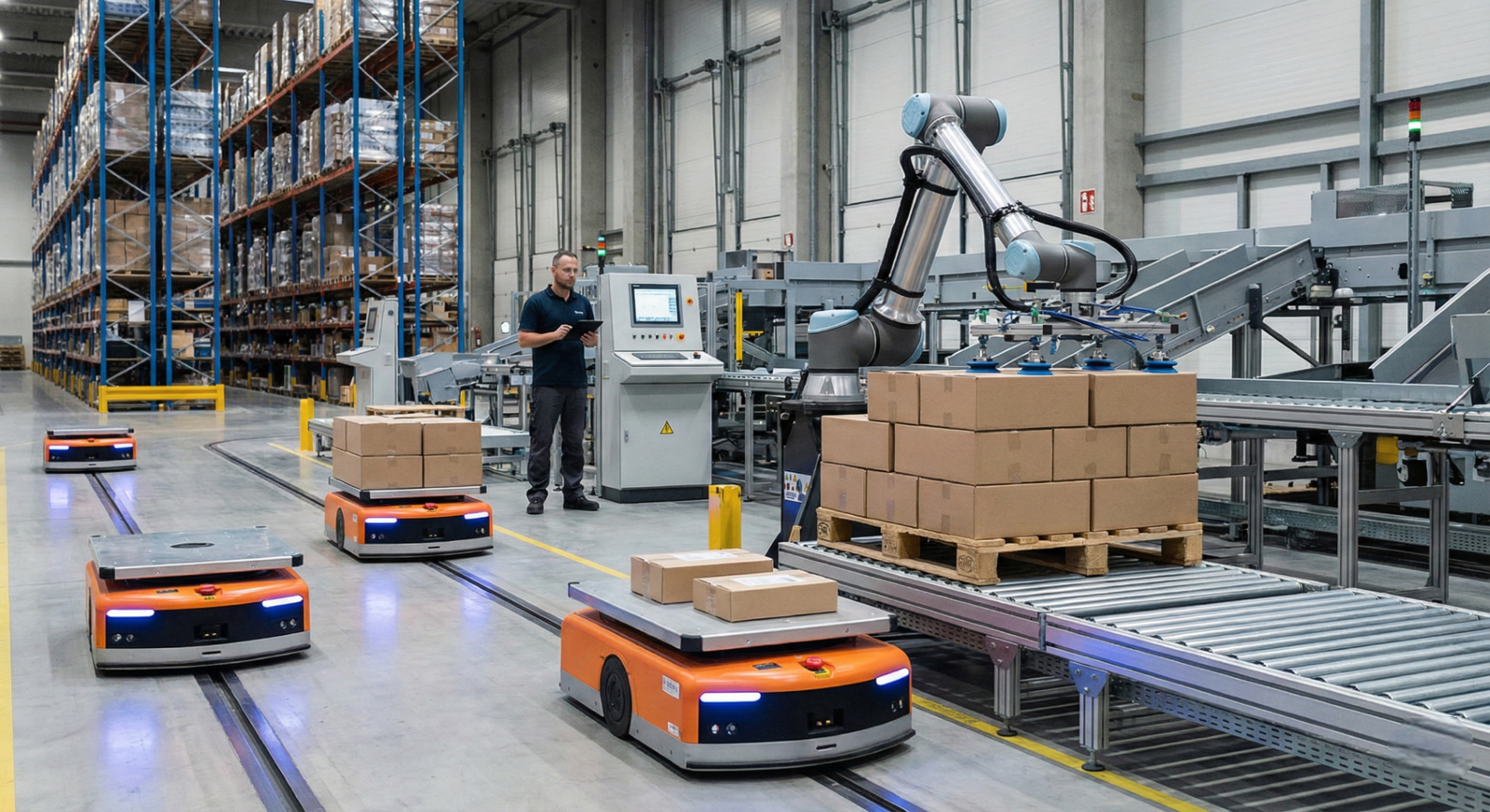Key Takeaways:
- Companies must self-disrupt—they have to be willing to destroy their own successful, older business before a competitor does it for them.
- Success now depends on managing a strong ecosystem and the network effects it creates, not just having the best factory or product.
- Companies need to be radically customer-centric, focusing on a smooth, integrated experience rather than just adding product features.
The business world is full of cautionary tales about massive companies that failed to change when technology shifted. The downfall of giants like Kodak, Nokia, and Blackberry wasn’t due to poor products, but a profound problem of organizational inertia—they were simply too slow to move. This sluggishness, or corporate myopia, meant they prioritized short-term financial stability over long-term survival. The core strategic error was clinging to the old Product Model instead of embracing the new Platform Model. This analysis shows that survival in the digital age requires continuous innovation and a proactive willingness to practice self-disruption.
From Physical Products to Digital Platforms
Around 2007, the competitive landscape for consumer technology changed forever. To understand why the old leaders collapsed, you must first grasp the nature of the shift they failed to navigate.
Mastering the Physical Domain
Before the platform revolution, corporate success was all about excellent manufacturing, efficient supply chains, and tough hardware. Nokia, Blackberry, and Kodak were masters of this physical domain. Nokia dominated global phone production. Kodak controlled the profitable film processing industry for decades. Blackberry’s mastery was in secure, reliable corporate communication and its beloved physical keyboard. These companies measured success by the millions of physical units sold, a metric that quickly became obsolete when the market shifted.
The Value Migration to Software
The launch of the iPhone and, more importantly, the App Store in 2008 signaled the end of the product-centric era. The App Store allowed third-party developers to create endless utility, transforming the phone into a powerful computing platform. This created a “virtuous cycle” of growth and customer loyalty: more users meant more developers, which meant more valuable apps, drawing in even more users. This is the power of network effects. The companies that succeeded, like Apple and Samsung, shifted their focus to measuring ecosystem engagement and recurring revenue, moving beyond simple handset sales.
Kodak and the Cannibalization Trap
The story of Kodak is the most powerful example of a company sabotaged by its own internal structure.
The Innovation Paradox
Kodak’s decline is tragic because the company wasn’t ignorant of the change—Kodak invented the first digital camera. The technology existed within its walls, but the company’s will to use it did not.
The Lucrative Film Barrier
Kodak’s leadership was paralyzed by the fear that fully embracing digital cameras would cannibalize their highly profitable film business. This deeply established, profitable film infrastructure became a strategic anchor, creating a massive internal resistance to the low-profit, high-volume demands of a digital future. Management chose to protect the high margins of the past over securing market relevance for the future.
Delayed Entry and Market Seizure
This organizational paralysis caused a deadly delay. Kodak downplayed its own groundbreaking digital technology, allowing competitors like Sony, Canon, and Nikon—unburdened by a legacy film business—to leap ahead. By the time Kodak realized the digital revolution was unstoppable, it was too late to compete effectively. This failure to practice self-disruption led directly to Kodak filing for bankruptcy in 2012.
The Mobile Failures (Nokia and Blackberry)
The failures of Nokia and Blackberry happened because they fundamentally mistook the threat of iOS and Android. They saw the emerging software ecosystems as features to be copied, not as a complete transformation of the business model.
Nokia: The Monolithic Collapse
Nokia, which once controlled over half the global mobile phone market, failed to shift its focus from handset quality to the overall experience of the software platform. Nokia stuck with its outdated Symbian OS, which was slow, difficult for developers, and lacked a coherent app store. The fatal strategic error was refusing to adopt the freely available and thriving Android ecosystem. Instead, they insisted on building or licensing their own inferior software, losing the critical war for the developer community and the essential network effects.
Blackberry: The Enterprise Blind Spot
Blackberry’s strength lay in its secure, proprietary network and physical keyboards, which dominated the corporate market. Management mistakenly believed these niche features were enough to protect them. However, the market demanded consumer-driven features like rich media, seamless internet, and the utility of the App Store. Blackberry’s system could not meet these expectations. As professionals started using their personal iPhones and Androids for work—the “consumerization of IT” trend—Blackberry rapidly lost relevance. Like Nokia, they made the mistake of trying to rebuild their own proprietary operating system instead of joining a mature, powerful platform.
The Adaptors’ Blueprint: Apple’s Strategy of Integrated Control
Apple’s rise demonstrates the power of a highly controlled business model designed to maximize customer value and profit.
The Master of the Orchestrated Ecosystem
Apple’s success is based on tightly integrating its hardware, software, and services (like the iPhone, MacBook, and M-series chips) into a single, smooth digital experience. This managed approach allows Apple to control the entire user journey, ensuring a premium quality and stability.
Creating Lock-In and Loyalty
A cornerstone of Apple’s long-term advantage is creating high customer loyalty through product interoperability. Since Apple products work better together, this creates significant switching costs—it becomes difficult for users to leave the ecosystem. By focusing on the premium market segment, Apple maintains high pricing power and excellent profit margins.
Financial Dominance through Services
Apple successfully changed its revenue stream from one based on single product sales to one supported by continuous, recurring income. It uses the massive network effect of the App Store and high customer loyalty to generate substantial revenue through subscription services, proving that profitability is dictated by control over the platform, not just the number of units sold.
The Adaptors’ Blueprint: Samsung’s Strategy of Scalability and Diversity
Samsung executed a different but equally successful strategy by using open platforms to achieve dominance through massive volume and operational excellence.
Strategic Leverage of Open Platforms
Samsung made the critical adaptive decision that Nokia refused: embracing Google’s Android operating system. This provided Samsung with immediate access to a free, superior, and established app ecosystem, which allowed for lower manufacturing costs and significantly faster scaling. This strategic choice effectively let Samsung outsource the difficult “software war” and focus its resources on its core strengths: hardware differentiation and relentless supply chain efficiency.
Segmentation for Global Dominance
Unlike Apple, Samsung targets a diverse global audience across multiple price points—from budget-friendly devices to cutting-edge flagships. This broad market segmentation allows Samsung to appeal to tech enthusiasts, practical users, and budget buyers alike, helping it consistently maintain the largest overall market share by unit volume.
Operational Excellence and Supply Chain Mastery
Samsung’s operational strength is key to its scale strategy. The company uses massive internal manufacturing capabilities and maintains efficient supply chain management. By diversifying its production networks (for example, shifting manufacturing to Vietnam), Samsung mitigated risks and optimized costs, translating its manufacturing prowess into overwhelming market penetration.
The Critical Difference Between Product and Platform Thinking
The defining factor for survival was not just innovation, but the capacity to pair new technology with a radical new business model: transforming the revenue stream from a single product sale to an enduring platform relationship.
Contrasting Paths to Platform Dominance
The analysis reveals two successful approaches to the platform economy:
- Apple (Integrated Control): Focuses on deep integration, proprietary technology, and a closed ecosystem to ensure a premium experience and maximize profit captured per user.
- Samsung (Scaled Diversity): Focuses on leveraging open platforms (Android) to achieve massive volume, market segmentation, and efficiency, maximizing total market penetration.
Both succeeded because they correctly aligned their core strengths with a viable, thriving ecosystem (iOS or Android).
The Central Failure of Vision: The Trap of Past Success
The failed companies were victims of their own success. They focused exclusively on small improvements to their old products, believing their past dominance would protect them. They fundamentally misunderstood that the competitive battleground had moved entirely to the software layer and the developer community. The successful companies continue to expand and innovate within their respective ecosystems, ensuring their success is self-sustaining and amplified by the built-in network effects.
Strategic Lessons: How to Avoid the Next Failure
The histories of these giants offer four critical, transferable lessons for any organization operating in a rapidly changing market.
Lesson 1: Drive Your Own Cannibalization
The biggest risk is the fear of destroying a currently lucrative business. Kodak showed that technological ability is useless without organizational courage. Companies must invest resources into new technologies, even if they directly compete with the core, high-profit revenue streams. You must be willing to disrupt yourself before a competitor does it instead.
Lesson 2: Competitive Advantage
Nokia and Blackberry proved that world-class hardware is useless if it runs on an outdated operating system. The source of competitive advantage has moved from the factory floor to the software platform. Priority must be placed on creating an interconnected, seamless customer experience over optimizing an isolated product.
Lesson 3: Be Customer-Centric, Not Product-Centric
The market shifted from valuing “robust reliability” (Nokia) to demanding “compelling experiences” (Apple/Samsung). Successful companies base their continuous innovation on the evolving needs of the customer. Technology adoption must be driven by ease of use, compatibility, and how well it fits into the customer’s life, not just sophisticated or niche features.
Lesson 4: Strategic Outsourcing
Nokia’s insistence on building its own weak operating system was a fatal error. Samsung showed that it is strategically smart to adopt a superior open platform (Android) if a proprietary system cannot quickly match the quality and developer support of market leaders. This allows a company to focus its resources on its true strengths, such as hardware differentiation, pricing, and supply chain efficiency, ensuring scale and market relevance.
Conclusion
The decline of Kodak, Nokia, and Blackberry offers a unified and critical lesson: the new rules of the market are defined by the Ecosystem Imperative. A company’s survival is no longer determined by the quality of a single product, but by the strength of its surrounding platform and the network effects it harnesses. The winners were not just technology innovators; they were pioneers in business model transformation. They taught us that success requires not just a willingness to adapt, but a courage to self-destruct and rebuild, securing a future built on platforms and services rather than the fragile foundation of the physical product alone.
Frequently Asked Questions (FAQ)
What is the Ecosystem Imperative?
The Ecosystem Imperative is the understanding that in the modern digital economy, the main source of competitive advantage comes from an integrated network of hardware, software, services, and third-party developers, not from a single product. Companies must build, join, or leverage a thriving ecosystem to survive.
How did the App Store change the mobile industry?
The App Store turned the mobile phone from a simple communication device into a comprehensive computing platform. It allowed outside developers to create infinite functions, generating network effects that increased the device’s value with every new user and every new app. This shifted the industry focus from hardware to software and services.
What is corporate myopia?
Corporate myopia describes a failure of vision where a successful company focuses only on short-term profits and its current, profitable business, while ignoring huge, long-term market shifts driven by new technology. It means being so focused on the present that you lose sight of the future.
What does it mean to “cannibalize” your own business?
To cannibalize your own business means to strategically launch a new product or service that you know will reduce the sales and profits of your existing, older, but currently profitable, product. The lesson is that if you don’t hurt your own business by launching the future, a competitor will.





